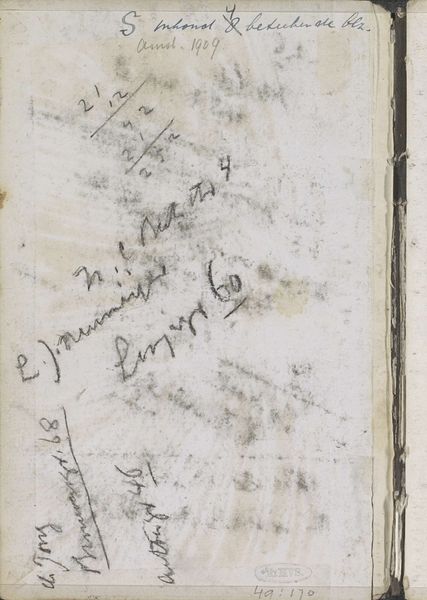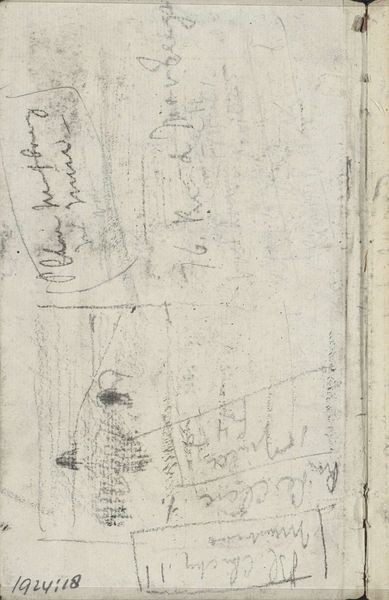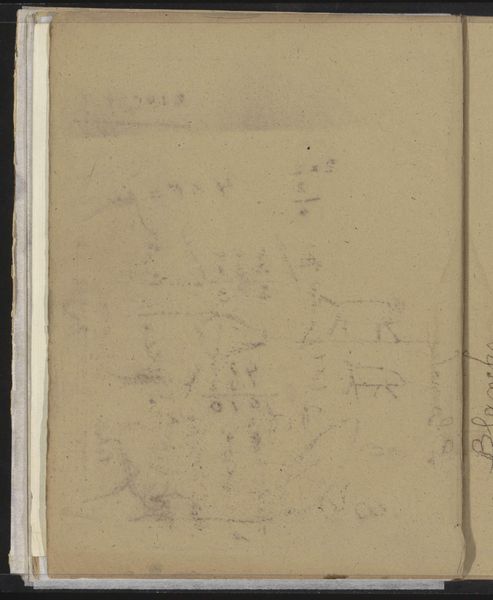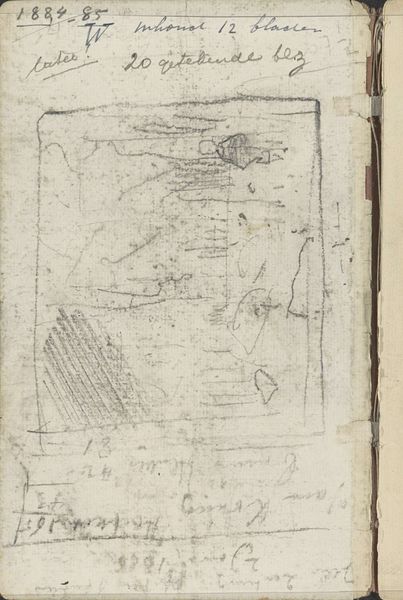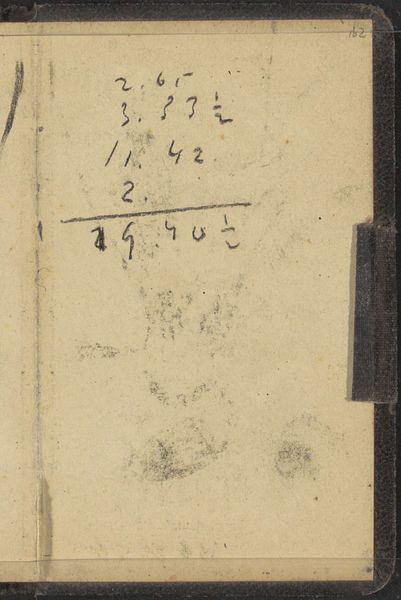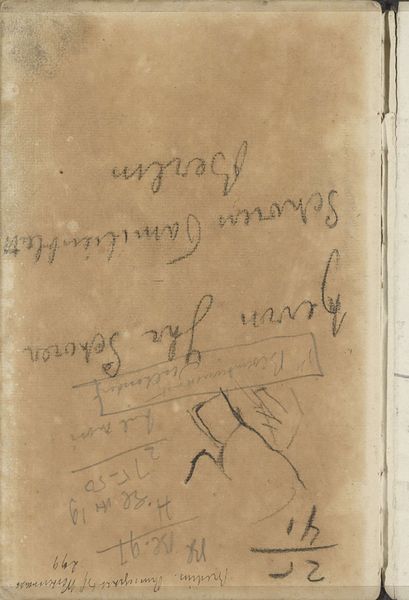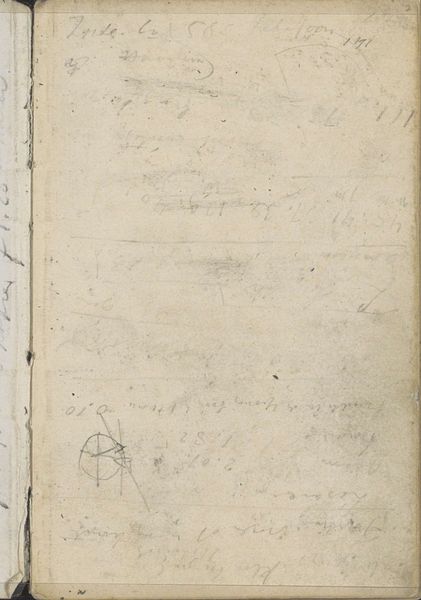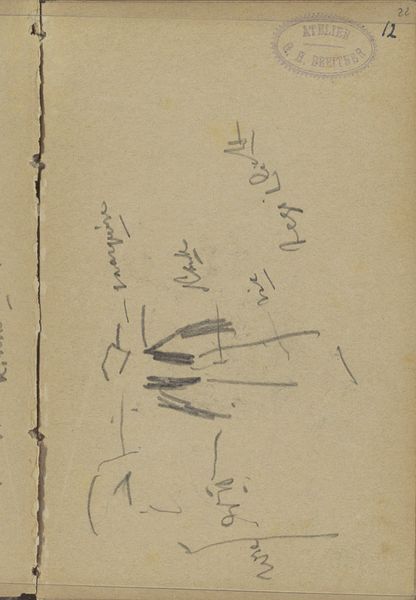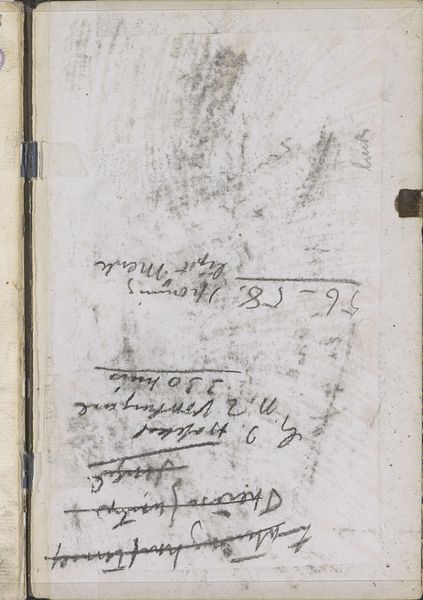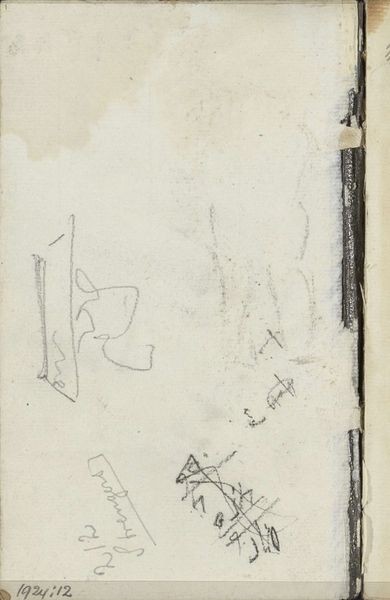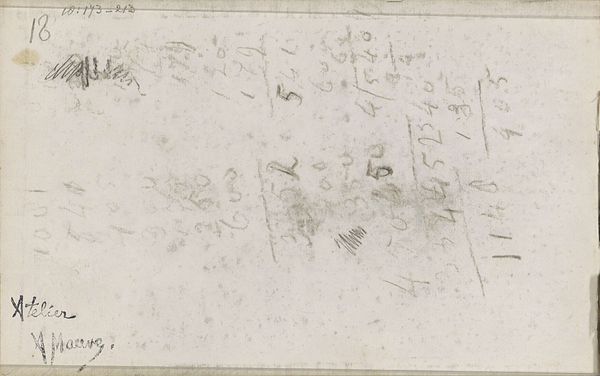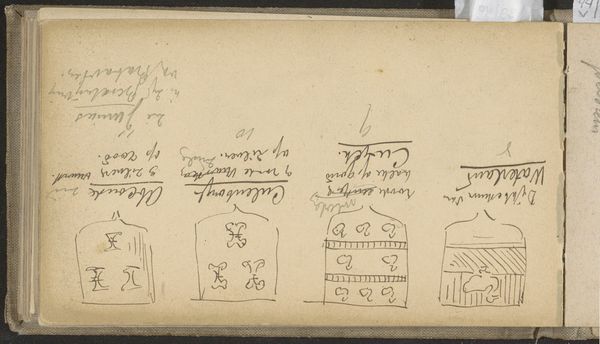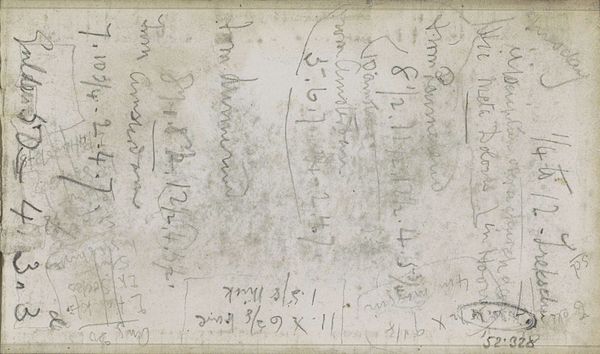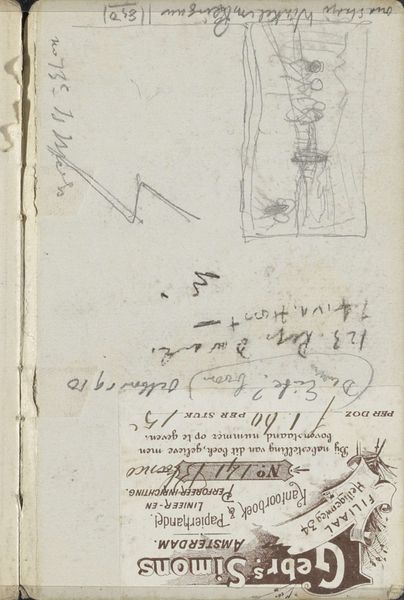
Copyright: Rijks Museum: Open Domain
Editor: We are looking at *Figuurstudies*, or Figure Studies, by George Hendrik Breitner, dating from around 1886 to 1923. It's a pencil and graphite drawing on paper held in the Rijksmuseum collection. It feels more like a fleeting snapshot than a finished piece, almost like a visual note. How do you interpret this work within the context of its time? Curator: Breitner’s sketches, especially those of working-class subjects and scenes from everyday Amsterdam life, reflect a move toward social realism. He wasn't interested in idealizing his subjects. Given the political climate and growing social awareness of the late 19th century, artists increasingly used their work to depict the realities of urban life, moving away from purely academic themes. Editor: So it's a commentary, or at least a reflection, on contemporary Dutch society? Curator: Absolutely. Consider how photography, a relatively new medium at the time, was also changing the way artists and the public saw the world. Breitner was keenly interested in photography. He often used it to capture fleeting moments, then recreated them on canvas. Editor: So, in that sense, he’s capturing a candid moment from real life? The composition looks intentionally cropped, almost like a photograph. Curator: Exactly! The 'snapshot' aesthetic, along with his subject matter – not wealthy patrons or idealized landscapes but ordinary figures – challenged established notions of what was worthy of artistic representation. Editor: I hadn't thought about photography's influence. Curator: The politics of imagery are crucial here: who gets depicted, how they're depicted, and why. Editor: This has definitely changed my understanding of what I initially dismissed as just a quick sketch. Thank you! Curator: My pleasure! It's a reminder to always consider the social forces shaping an artwork.
Comments
No comments
Be the first to comment and join the conversation on the ultimate creative platform.
